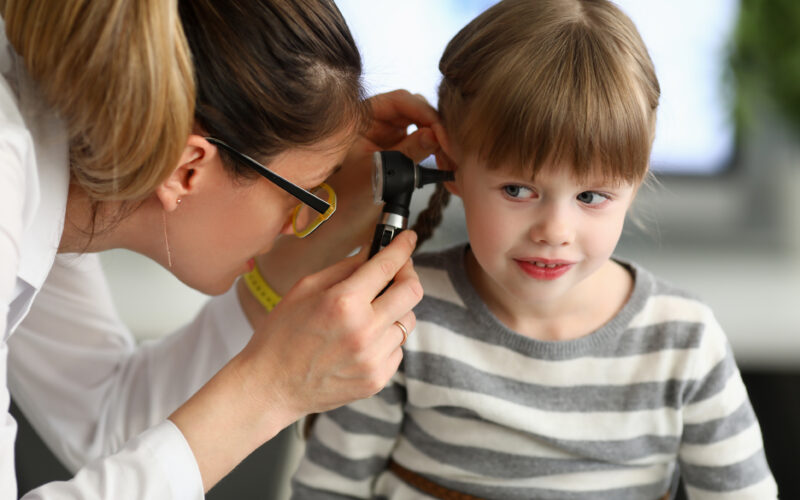The following strategies will help you create a stimulating speech and language environment that can support your child’s communication development.
These simple suggestions are meant for everyday use. They will show you how to make your child’s playtime more meaningful by doing things like:
- taking turns
- asking fewer questions
- providing your child with opportunities to communicate
As your child’s caregiver, you are in the best position to provide your child with daily learning experiences.
Early Language Stimulation Strategies for Families & Caregivers
Being face to face helps your child:
- Know that you are paying attention and are interested in what they have to say.
- Establish and maintain eye contact, an important part of communication.
- Learn to focus on the same thing as you.
- See how you say different sounds and words.
Being face to face helps you:
- Notice what your child is looking at, which is a clue to what they are interested in.
- Observe your child’s facial expressions — so that you know when to stop, when to change activities, and when to keep playing.
How do I get face to face?
- Get down to your child’s physical level — sit on a small chair, lay on the floor, or lift your child up.
- Move as your child moves to maintain face to face contact.
- Hold motivating objects (i.e., favourite toys/food) beside your cheek to encourage your child to look at your eyes and mouth.
Watch the ‘Conversations pave the way for first words’ video.
The child has learned something new about the world they live in through exploration.The child has learned a new idea but they do not have a word to describe it.
The child’s brain is able to store the experience of the cat – how it looks, how it feels and how it smells – but now they need a word to describe it and to share it with others.
Why follow your child’s lead?
- It shows your child that you are interested in what they are doing.
- Children have an easier time learning language when you talk about things they are interested in.
How-to follow your child’s lead
- Watch to see what your child is interested in.
- Wait to give your child a chance to choose the toy or activity.
- Join in and talk about what you and your child are doing.
When not to follow your child’s lead
- Your child is doing something you don’t want them to do, for example throwing a toy or biting.
- Your child has a short attention span.
By joining in and playing together, you create many opportunities for your child to learn more language and to practice talking with you.
For example:
Instead of…
Insisting that your child play with a toy of your choice …
Try to…
Watch to see what toys and your child finds interesting and then play along.
Instead of…
Watching your child play from the sidelines …
Try to …
Get your own toy and copy what your child is doing with that toy (if appropriate).
Instead of…
Telling your child what to do with the toys …
Try to…
Get your own toy and show them how to play.
Pretend play is important for language development, so model simple pretend actions such as feeding, combing hair, sleeping, washing.
Instead of…
Feeling reserved and self-conscious when playing with your child …
Try to…
Forget about how you look and be playful — you are the best toy in the house! You will get your child’s attention by using an excited voice, fun words (e.g., “oops”, “wee!”, “crash”) and lots of gestures/facial expressions.
Use short sentences when talking to your child (i.e. one to three words at most). Always stay one step above your child’s current level of communication.
For example: You offer your child juice.
Instead of asking, “Do you want to have a glass of juice?” try the following:
- If your child uses no words, you should use single words, (For example: juice?)
- If your child uses single words, you should use two-word combinations. (For example: want juice?)
- If your child uses two-word combinations, you should use three-word combinations. (For example: want some juice?)
This strategy can be used to help your child understand what you say. Using short phrases helps your child to pick out the important words from the sentence. If your child already has a good understanding of language, using short sentences will make it easier for your child to copy what you are saying.
Labelling is a way for you to help your child learn new words.
Labelling, or naming, is useful because it:
- Shows your child that you are responding to their focus of interest.
- Teaches your child that you can use a word instead of a gesture.
Here are some suggestions for things to talk about:
- Tell your child the names of people and objects that they are interested in: ball, cookie, daddy, doggy, juice, swing.
- Talk about what your child is doing: eat, give, open, push, walk, splash.
- Table about where the objects and people are: in, on, out, up.
- Use words that are useful for your child in everyday situations: eat, help, mine, more.
Repeat important words several times in many different situations:
For example, see how many times you can repeat the word “bubbles” in an activity by combining it with other words: “Bubbles” “Open bubbles” “Blow bubbles” “Pop bubbles” “Close bubbles” “Bubbles” “More bubbles”
*Bubble wands can be a choking hazard for children; ensure that you are holding the wand at all times
- Wait to give your child a chance to react or respond.
- Some children need to hear a word many times before they can understand it and try to say it.
Wait for your child to comment, react, or ask for more with a gesture or a word.
If your child does not say anything after you have waited five to ten seconds, model the words that they should have said. For example:
Parent: “We are going to put the block _____.”
Parent waits five to ten seconds for child to fill in the word “on”.
Child does not respond.
Parent: “On. Put block on.”
Parent gives child block to put on top of the block tower.
Be available to help your child in situations, but wait for your child to request for help by making eye contact, bringing the object to you, vocalizing, or saying “help”.
Watch the ‘Sounds and Gestures: Building Blocks for your Child’s First Words’ video.
These strategies remove the ability to only answer “yes” or “no” and encourages your child to use the specific name of the object.
The strategies also provide a chance for your child to comment or react.
Offer desired objects bit by bit.
- This strategy works well at snack time: pour only a little juice or milk into your child’s cup, so that they have to ask you for more several times during snack time.
- Be the keeper of all of the pieces.
- When playing with toys that have multiple pieces (e.g. puzzle, blocks), keep all of the pieces in a bag or container, encouraging your child to request one piece during each turn.
Offer a choice.
- Show and name each choice item while asking “Do you want car or block?”
- Wait for your child to tell you what they wants. (E.g. by looking, reaching, pointing, vocalizing, or using words.)
- Give only the object that was asked for.
- Label the item as you hand it to your child. (E.g. “Block, you want block.”)
Create a silly or unusual situation.
- Do something your child would not expect and wait for a reaction.
Examples of silly situations:
- Put your child’s pajama pants on his/her head.
- Put both of your child’s socks on the same foot.
- Start happily bathing your child in a bathtub that has no water in it.
- Start to pour your child’s juice but forget the cup.
Taking turns is an important skill for your child to learn. At first, children learn to take turns in play. Later, children understand how to take turns talking in interactions. Turn-taking helps increase a child’s attention span and promotes eye contact.
Take turns by:
- Setting a limited number of turns that you expect your child to take at first.(E.g. place two blocks on the tower before they leave.)
- Labelling turns from your child’s perspective. (E.g. “My turn” and “Mommy’s turn.”)
- Using phrases such as, “One more block” and “Blocks are all done.”
- Increasing the number of turns you expect your child to take, based on how they are responding to the activity.
- Taking your turn quickly to keep your child’s interest.
Activity example for turn-taking:
- Ball
- Make it interactive by playing catch: rolling the ball back and forth or throwing the ball in a box with your child.
- Use different words like “ball”, “throw”, “in bounce”, “catch” to label object and action.
- Block
- Make it interactive by building a tower together: take blocks off one at a time with your child.
- Use different words like “block”, “on”, “off”, “fall down” to label object and action.
- Puzzle
- Make it interactive by putting together a puzzle one piece at a time.
- Use different words like animal/object names on puzzle piece, “more”, “put in”, “take out” to label object and action.
If your child does not use words, or you don’t understand what was said, say it as your child would if they could.
Give your child a good, clear model of how the words should sound, without calling attention to the error. For example:
- Child: “ba”
- Parent: “Bird, yes there’s the bird!”
Give your child the words for sounds or gestures that they use. For example:
- Child: Reaches for juice and grunts “ah-ah”.
- Parent: Interprets that child wants juice and says, “Juice. Daddy Juice.”
- Parent then pours child juice.
- Child: Screams and begins to cry when parent presents book at bed time.
- Parent: Interprets that child does not want to read book and say, “No, no book!”
- Parent offers child a different book to read or another nighttime activity.
- Allow your child to choose the book.
- Give your child as much time as they need to look at the pictures.
- Join in with sounds, actions, or words.
Some suggestions when reading a book:
- Sit face to face with your child with the book facing toward them.
- Use books with lots of pictures.
- Label the pictures. (E.g. “I see a ball.”)
- Pause and wait for your child to take their turn.
- Keep the story simple, make up the words to the story, or change them.
- Use an excited voice, make sounds and special voices that go with the story.
- Leave out familiar words or parts of the story for your child to fill in. (E.g. “Once there was a bear who loved _____.”)
- Talk about the cause of events (“Why?” “How come?”).
- Enjoy and share that special joy of stories with your child.
Take advantage of daily routines and add language. This is a good opportunity to:
- Label important actions and objects.
- Repeat keywords.
- Give your child a reason to communicate.
- Take turns together.
- Label the routine. (E.g. “getting dressed”)
Mark each step, for example, “shirt on”, “pants on”, “socks on”.
- Hold up pants and wait for your child to say or do something.
- Take turns choosing what to put on next.
- Label the end of a routine. (E.g. “all finished”)
- Other examples of daily routines:
- bath time
- mealtime
- bedtime
- play time
Imitation will motivate and encourage your child to interact with you. Imitation shows your child that you are interested in what they are doing, and also encourages them to imitate you back.
Some suggestions for imitating your child are:
- Follow your child’s lead by imitating their body movements and facial expressions.
- Try imitating with another toy rather than expecting your child to share his/her toy.
Imitate what your child says and make corrections. For example:
Child: “Ded car.”
Parent: “Yes, red car.”
Imitate and add one or two more words. For example:
Child: “Put baby.”
Parent: “Put baby on table.”
Add new ideas to what your child says. For example:
Child: “Doggie!”
Parent: “Doggie says woof, woof!”
Play time
Reading books
Mealtime
Resource Downloads
The list of early language stimulation strategies for families & caregivers is available in multiple languages.
- Early Language Stimulation Strategies – Arabic
- Early Language Stimulation Strategies – Simplified Chinese
- Early Language Stimulation Strategies – Traditional Chinese
- Early Language Stimulation Strategies – English
- Early Language Stimulation Strategies – Farsi
- Early Language Stimulation Strategies – Filipino
- Early Language Stimulation Strategies – French
- Early Language Stimulation Strategies – Portuguese
- Early Language Stimulation Strategies – Russian
- Early Language Stimulation Strategies – Spanish
- Early Language Stimulation Strategies – Tamil
- Early Language Stimulation Strategies – Urdu
Resources to Help Your Child’s Communication Development
Child Development Webinar – Explains developmental milestones and how to know if your child needs additional support.
Promoting Communication at Home – Tipsheet that teaches moments to encourage communication during daily routines



We often ask too many questions and this stops conversation instead of keeping it going. Try to:
Label new words instead of testing whether your child knows the word